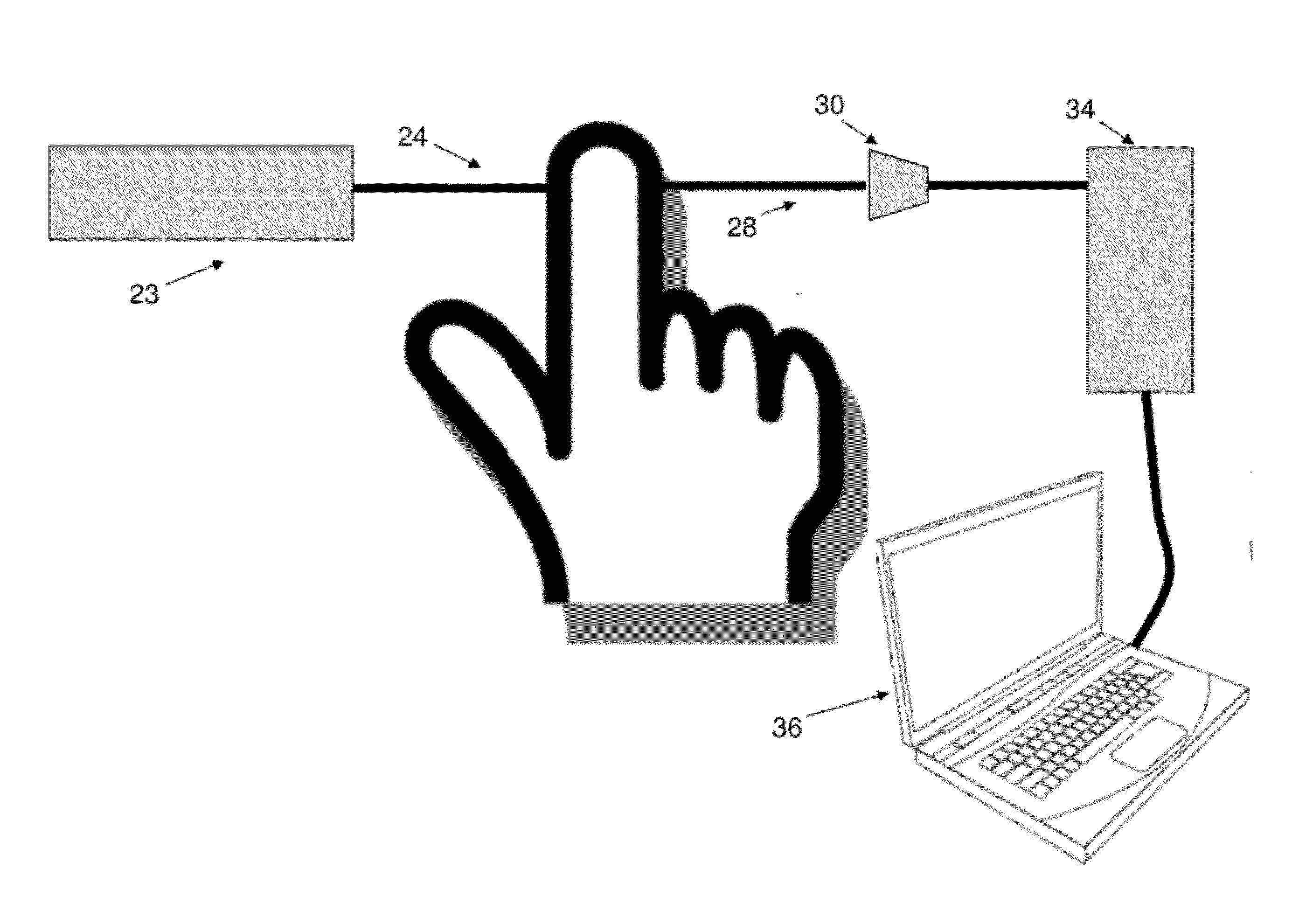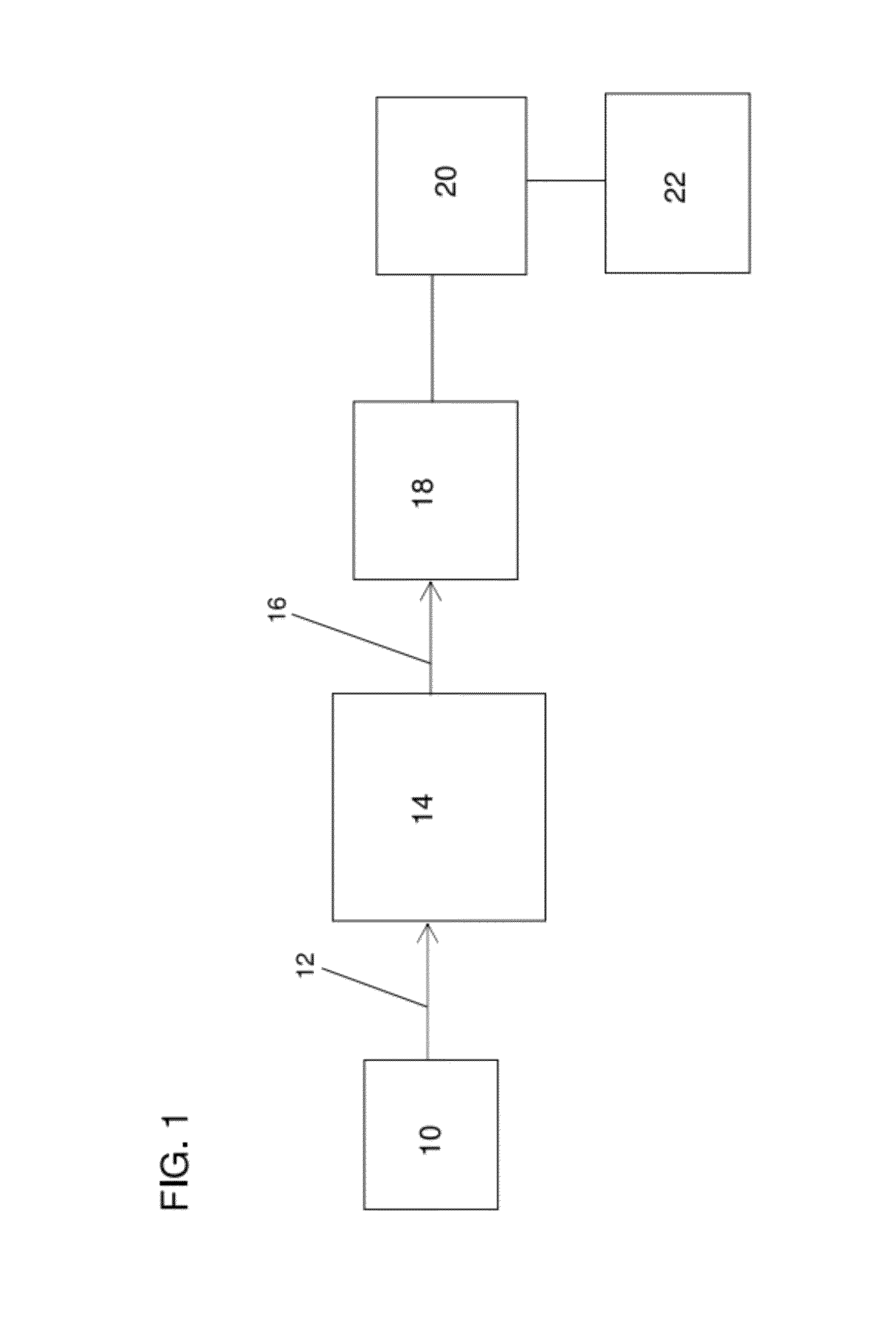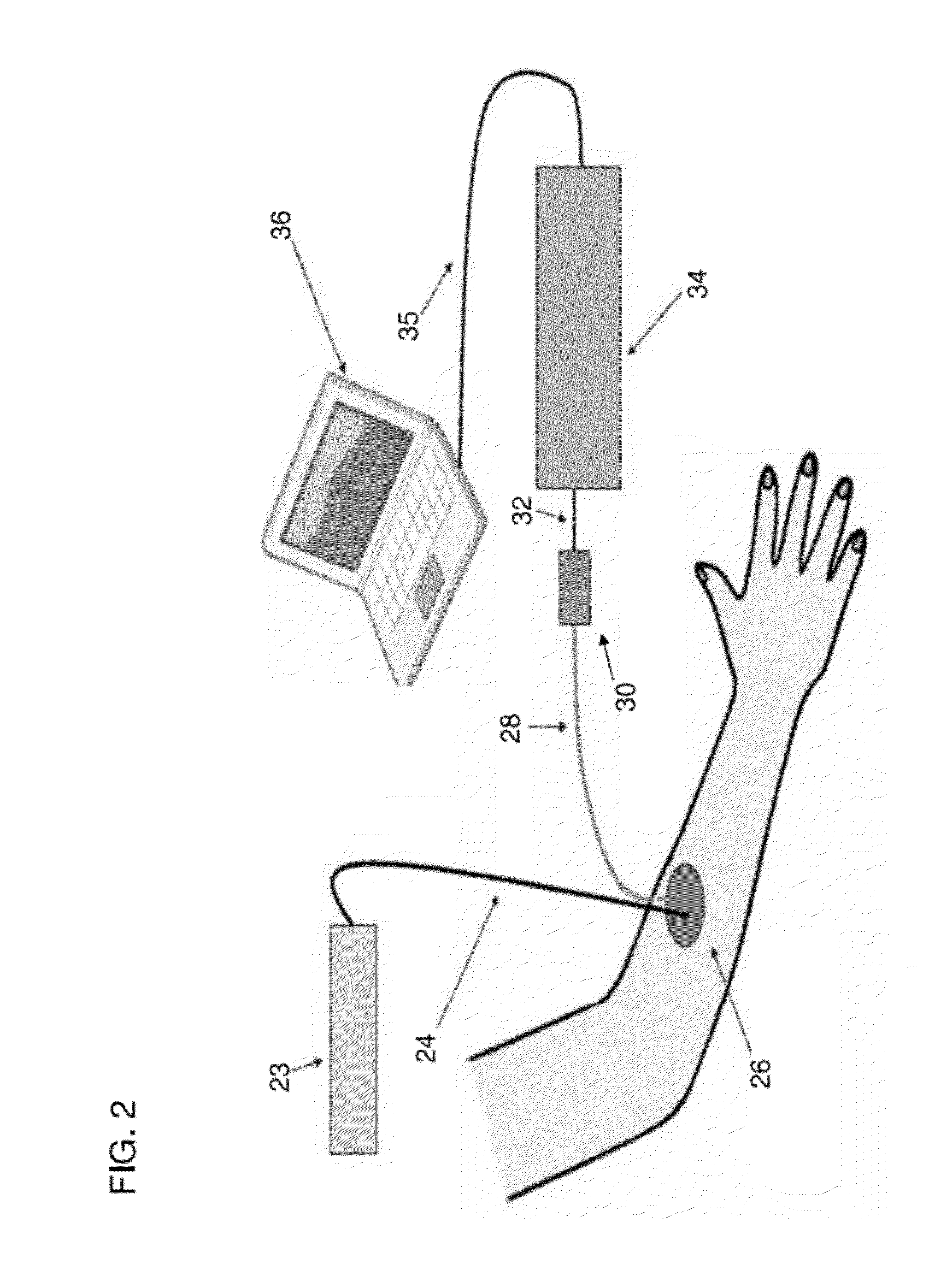Systems, devices and methods for monitoring hemodynamics
a hemodynamic and system technology, applied in the field of monitoring hemodynamics, can solve the problems of hypovolemia, subjective, inconsistent, and reduced cardiac output, and achieve the effects of improving hemodynamics, improving hemodynamics, and improving hemodynamics
- Summary
- Abstract
- Description
- Claims
- Application Information
AI Technical Summary
Benefits of technology
Problems solved by technology
Method used
Image
Examples
example 1
Measuring Fluid Flow in a Tube Using Transmission Mode
[0078]In a first example a laboratory prototype that was used to measure the required physiological parameters simulated in a phantom. In this setup we used two diode lasers (wavelength 660 nm and 980 nm) to illuminate the target. The phantom comprised: a diffused plastic tubing that had an inner diameter of 0.8 mm and a wall thickness of ˜1 mm, and a diffused phantom made of resin with a cylindrical bore as a blood conduit.
[0079]The blood flow rate through the tubing was adjusted using the pump settings. Initial calibrations were performed using a syringe pump to generate constant velocity flow. Subsequent measurements were made using a peristaltic pump to simulate natural blood. Oxygenation was measured using a calibrated dissolved-oxygen sensitive platinum electrode.
[0080]The lasers were focused to a spot of approximately 100 μm inside the tube. The sources could, in principle, be placed against the target, as with conventiona...
example 2
Calibrating Flow Rate in a Tube
[0086]In order to calibrate the fitted flow rate for the actual blood flow velocity, we performed the same set of measurements using blood pumped by a syringe pump instead of the peristaltic pump. In this case, the flow rate is uniform as a function of time and can be measured accurately by measuring the volume of liquid flowing out of the tube in a fixed time. We obtained correlation plots for different flow rates using a syringe pump, and FIG. 9 shows an example of one such correlation plot. As can be seen, the profile for short correlation times looks similar to that of the constant flow. However, the oscillations at longer times are absent, as expected in this case. Also shown, is the fitted flow rate by the red line superimposed on the raw data black dotted line. The fitting is performed using the same procedure as mentioned above for the peristaltic pump data. The velocity calibration is obtained by plotting the reciprocals of the fitted τ's as a...
example 3
Measuring Oscillatory Flow
[0088]We can also obtain the heart rate or the pulse rate from the correlation plot in the longer times range. A unique feature of the peristaltic pump is that the flow velocity is determined by the pulse rate. In FIG. 11, we show correlation data in this time range for different flow rates that are increasing respectively from Flow 1 to Flow 6. As can be seen clearly, the oscillation frequency increases with flow rate and also shown in FIG. 9 is the plot of the measured oscillation frequency or measured pulse rate for different flow settings.
PUM
 Login to View More
Login to View More Abstract
Description
Claims
Application Information
 Login to View More
Login to View More - R&D
- Intellectual Property
- Life Sciences
- Materials
- Tech Scout
- Unparalleled Data Quality
- Higher Quality Content
- 60% Fewer Hallucinations
Browse by: Latest US Patents, China's latest patents, Technical Efficacy Thesaurus, Application Domain, Technology Topic, Popular Technical Reports.
© 2025 PatSnap. All rights reserved.Legal|Privacy policy|Modern Slavery Act Transparency Statement|Sitemap|About US| Contact US: help@patsnap.com



